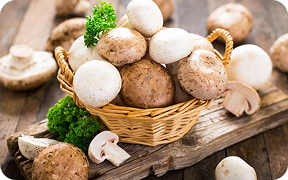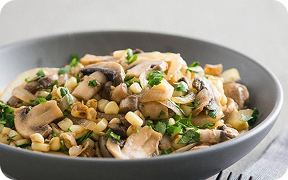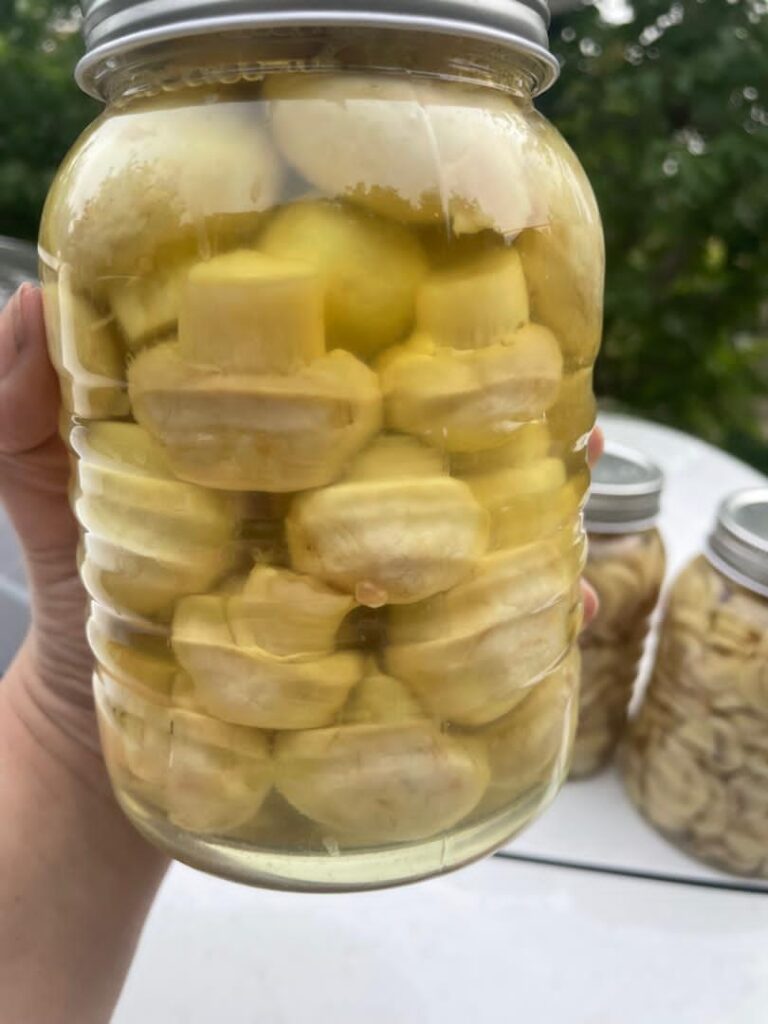Introduction: The Importance of the Mushroom Industry and Introduction to Jolgeh Qalb Company
The mushroom farming industry, especially button mushrooms (Agaricus bisporus), is considered one of the most dynamic and strategic sectors of modern agriculture in the world and especially in Iran. Mushrooms, not only as a luxury food, but also as a rich source of protein, fiber, and rich in B vitamins and minerals, have a special place in ensuring food security and public health. This product requires a professional and specialized supply chain, given the increasing need of the food industry for high-quality, sustainable, and traceable raw materials.
Jolgeh Qalb Company, with a deep understanding of these market needs, has introduced itself as one of the pioneers in the production and supply of mushrooms at an industrial level. Our main focus is on two key product supply forms: raw mushrooms with the highest standards of freshness and processed blanched mushrooms, each of which is a precise response to the different requirements of different sectors of the food industry. The aim of this guide is to explain the technical details, competitive advantages and purchasing strategies for processors, large restaurateurs and major distributors so that they can make the best choice from the Jolge Qalb product portfolio with complete confidence. We are committed to providing products that not only meet hygiene requirements, but also ensure their full potential in improving the quality of the final product for our customers. n
Part One: Raw Mushrooms – The Gateway to Quality
Raw mushrooms are the pristine and untouched raw material that determines the path to the final quality of any food product. The difference between a top-notch final product and a mediocre one often lies in the initial quality of the raw mushrooms entering. Jolge Qalb, understanding this principle, applies the highest standards of cultivation and harvesting.
- Characteristics of the Ideal Raw Mushroom
The ideal mushroom should have a set of physical and environmental characteristics that indicate its health and freshness.
Appearance Criteria (Color, Texture, Absence of Stains)
A first-class raw mushroom should have a clear and fresh appearance. The cap should be pure white or very light cream (depending on the variety ordered). Any darkening, especially at the edge of the cap, indicates aging or the beginning of the oxidation process. The texture of the mushroom should be firm, dense and juicy; soft, spongy or shrivelled mushrooms indicate loss of vital moisture and reduced shelf life. The membrane under the cap (veil) should be as closed as possible, as excessive opening indicates reaching the peak of maturity, which negatively affects the texture and appearance.
The absence of stains is crucial. Brown or black spots can be caused by physical trauma, contact with contaminants or the beginning of the spoilage process. In bulk purchases, careful sampling is required to ensure that the product is free from any mechanical damage or external fungal or bacterial contamination.
The Importance of Organic Cultivation and the Environment of Heartland Greenhouses
Currently, there is a growing demand for products labeled “Pesticide-Free” or “Controlled Cultivation”. Heartland focuses on the use of composts enriched with natural nutrients and strict environmental control.
Our greenhouse environment is under strict control of temperature ((T)), relative humidity ((RH)), carbon dioxide ((CO_2)) and ventilation parameters. The strict control of these factors not only helps improve the cell structure of the mushroom but also minimizes the need for the use of preservative chemicals. This environmental approach ensures that the raw mushroom produced has the lowest pesticide residue levels (MRLs) and is ideal for health-conscious consumers.
Role of raw mushroom nutrients (vitamins, proteins) in the food industry
Raw mushrooms are a valuable nutritional raw material. On average, mushrooms grown in the heartland contain about 2-3% protein with essential amino acids. In addition, this product is an excellent source of B vitamins (such as riboflavin and niacin) as well as vitamin D (when exposed to controlled UV light). Factories using our raw mushrooms can rightly claim the added nutritional value of their final products (such as ready-made soups or meat products) due to the high quality of the raw materials.
- Harvest process and cold chain
The freshness of mushrooms deteriorates rapidly in the first hours after harvest. Proper post-harvest handling by the heartland is the key to maintaining quality.
Optimal Harvesting Techniques to Maintain Freshness
Harvesting is done in the heartland at peak maturity (when the cap is not fully opened) using manual or semi-automatic methods to minimize mechanical damage. Harvesting should be done carefully so that the stem of the mushroom is completely cut and no remnants of the culture medium are left on the product. Any damage or tear in the mushroom tissue is a gateway for microorganisms to enter and oxidation to begin.
Importance of Post-Harvest Temperature and Humidity Control
Mushrooms are highly hydrophilic and have a high respiration rate. The ideal post-harvest storage temperature should be very low, but not so low that freezing occurs.
The best storage conditions for maximum freshness are:
[ \text{Temperature: } 0^\circ \text{C to } 2^\circ \text{C} ] [ \text{Relative Humidity: } 90% \text{ to } 95% ]
These conditions reduce respiration rates and prevent browning. In the Heartland, the product is transported from the growing room to the primary cold storage in less than 30




